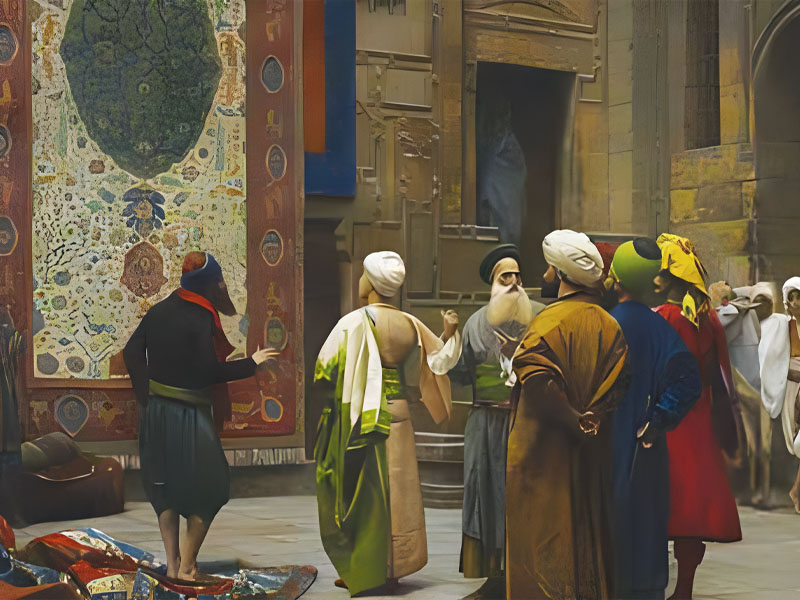Islamic heritage: Denotations of ornamentations in hand-knotted carpets
Issue 42

By Hayil Al Quntar
From the 1950s to the 1970s, there was a steady flow of Western studies on hand-knotted carpets, which led to great works that shed light on this form of heritage and its importance. Hand-knotted carpets have been used for thousands of years for a variety of purposes. People used them as bedding, to hold grain, and as blankets. Kings and emperors were eager to decorate their palaces with these carpets to show that their countries enjoyed luxury.
Although the carpet industry is one of the oldest industries, it did not become famous until the 11th Century AD with the Seljuk takeover of Iran. The carpet industry’s golden age starts in the 16th and 17th Centuries during the Safavid rule of Iran, especially during the reign of Shah Abbas the Great (1587 - 1629 AD). In Anatolia, Turkey, this industry flourished from the 13th Century as evidenced by the carpets found in Al Eddin and in the Mosque in Konya, and in many Italian and German paintings from the 13th to 15th Centuries.
In the Levant and Egypt, there was a great boom in this industry during the Mamluk period. The carpet industry was well established in the Caucasus region for a long time, and Armenian carpets were the most famous.
Hand-knotted carpets are made on vertical lines, but the nomads use horizontal lines on easy-to-move looms. They used cotton thread as the base, wrapping it around the upper and lower parts of the looms, and then they knotted wool or silk threads around the cotton threads to form the velvety surface of the carpet. With their ornamentation and colours, the carpets were masterpieces. More importantly, through symbols that represent heritage, culture, beliefs and ways of life, they conveyed ancient peoples’ ideas and beliefs.
Many researchers consider this industry to be purely of Islamic heritage. The majority of countries that produce these carpets are Islamic countries or ones in which Muslims make up a considerable percentage of the population. Although it existed centuries before Islam, it has flourished in the hands of Muslims since the 13th Century AD, and the Islamic Arts contributed to this growth. We can identify two patterns of ornamentation in oriental carpets: Depictions of nature; and geometric motifs.




































































